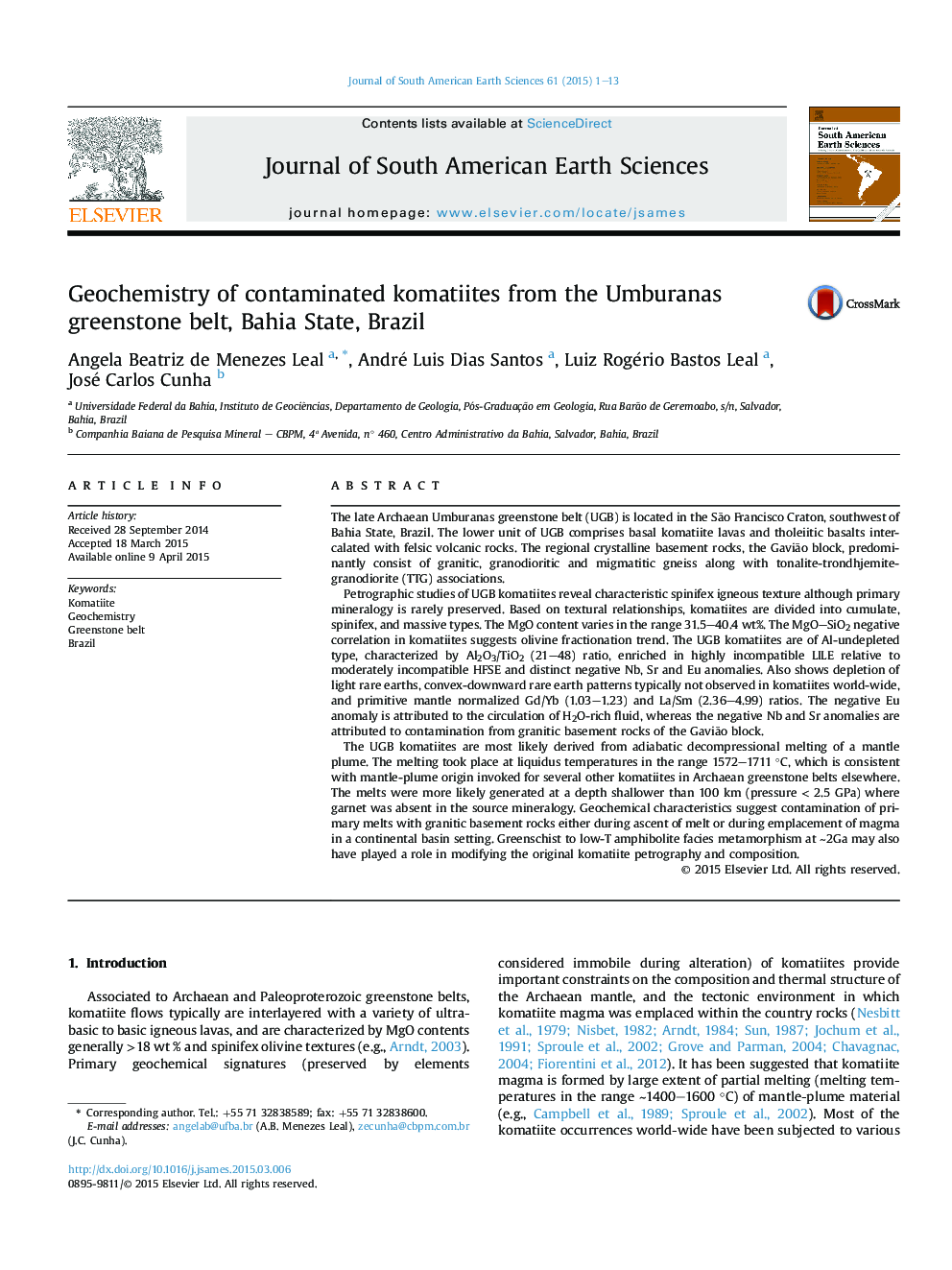| کد مقاله | کد نشریه | سال انتشار | مقاله انگلیسی | نسخه تمام متن |
|---|---|---|---|---|
| 4682213 | 1635148 | 2015 | 13 صفحه PDF | دانلود رایگان |

The late Archaean Umburanas greenstone belt (UGB) is located in the São Francisco Craton, southwest of Bahia State, Brazil. The lower unit of UGB comprises basal komatiite lavas and tholeiitic basalts intercalated with felsic volcanic rocks. The regional crystalline basement rocks, the Gavião block, predominantly consist of granitic, granodioritic and migmatitic gneiss along with tonalite-trondhjemite-granodiorite (TTG) associations.Petrographic studies of UGB komatiites reveal characteristic spinifex igneous texture although primary mineralogy is rarely preserved. Based on textural relationships, komatiites are divided into cumulate, spinifex, and massive types. The MgO content varies in the range 31.5–40.4 wt%. The MgO–SiO2 negative correlation in komatiites suggests olivine fractionation trend. The UGB komatiites are of Al-undepleted type, characterized by Al2O3/TiO2 (21–48) ratio, enriched in highly incompatible LILE relative to moderately incompatible HFSE and distinct negative Nb, Sr and Eu anomalies. Also shows depletion of light rare earths, convex-downward rare earth patterns typically not observed in komatiites world-wide, and primitive mantle normalized Gd/Yb (1.03–1.23) and La/Sm (2.36–4.99) ratios. The negative Eu anomaly is attributed to the circulation of H2O-rich fluid, whereas the negative Nb and Sr anomalies are attributed to contamination from granitic basement rocks of the Gavião block.The UGB komatiites are most likely derived from adiabatic decompressional melting of a mantle plume. The melting took place at liquidus temperatures in the range 1572–1711 °C, which is consistent with mantle-plume origin invoked for several other komatiites in Archaean greenstone belts elsewhere. The melts were more likely generated at a depth shallower than 100 km (pressure < 2.5 GPa) where garnet was absent in the source mineralogy. Geochemical characteristics suggest contamination of primary melts with granitic basement rocks either during ascent of melt or during emplacement of magma in a continental basin setting. Greenschist to low-T amphibolite facies metamorphism at ∼2Ga may also have played a role in modifying the original komatiite petrography and composition.
Journal: Journal of South American Earth Sciences - Volume 61, August 2015, Pages 1–13